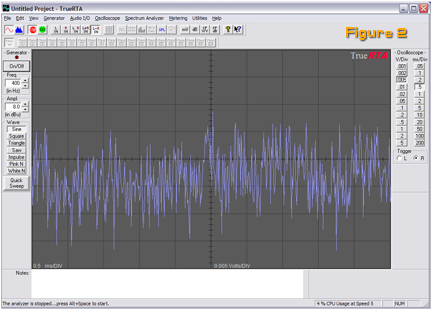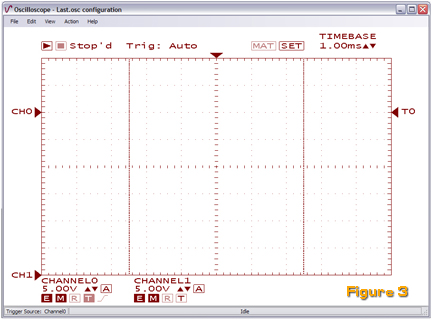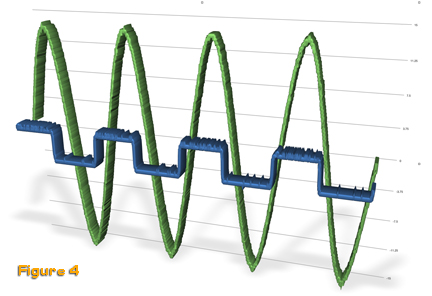Virtual Instruments: Cost Savings or Illusion?
By Bryan Bergeron
.jpg)
Entry-level virtual oscilloscopes are relatively inexpensive if you already have a suitable PC. My favorite virtual oscilloscope for quick and dirty audio frequency work is the Parallax oscilloscope (www.parallax.com). I keep the compact, rugged, two-channel hardware tucked in a drawer until I need it for a measurement. The eight-bit unit — which operates at 500 thousand samples per second (Ks/s) and accepts a 20 Vpp signal — is perfect for most 12 VDC applications.
The software is easy to operate (see Figure 1), and the USB-powered hardware unit comes with a set of well-engineered color-coded probes. Moreover, at $140, the virtual instrument has paid for itself many times over.

Another of my favorite entry-level virtual instruments is the TrueRTA oscilloscope and spectrum analyzer (www.trueaudio.com). The user interface (see Figure 2) is more feature-laden than the Parallax scope, and the spectrum analyzer is both powerful and easy to set up and use. Best of all, the fully functional, entry-level program is free. You can use it as-is or, if you need higher resolution, you can upgrade to a higher-resolution version.
TrueRTA requires a high quality audio card for signal processing. Input and output is via the speaker and microphone connections on your PC. TrueRTA is designed for audio work (as opposed to audio frequency work), such as establishing the frequency response of a speaker system. Although you could connect signal sources other than a microphone to the input of your sound card, you risk frying your computer hardware.
A recent addition to my virtual toolkit is the USB-1208FS and TraceDAQ software (www.mccdaq.com). On paper, the unit is impressive: 12-bit; USB-powered; eight single-ended analog inputs; and two 12-bit analog outputs. With a sample rate of 50 thousand samples per second, the USB-1208FS is limited to audio frequency work.

The $190 instrument ships with the ‘standard’ version of TraceDAQ software which provides a crippled function generator, rate generator, oscilloscope, and strip chart. The crippling is bizarre. For example, the function generator synthesizes the positive side of a sine wave.
More importantly, the software doesn’t enable you to set up a sine wave generator, inject the signal into a circuit, and simultaneously monitor the signal with the oscilloscope application. For another $200, you can get a full version of the software — and the other side of the sine wave.
Compared with my other entry-level virtual instruments, the user interface is very 90’s as in Figure 3. The hardware is similarly Spartan, in that the unit does not ship with leads. Moreover, the initial setup and calibration involves a contorted routine involving multiple jumpers and interacting with a calibration program.
Given the complexity of setup and use, I’ve relegated this virtual instrument to tasks requiring a chart recorder.

For most of my work, I use a dual trace digital Tektronix scope with compensated leads and probes that I picked up from eBay a few years ago. It allows me to avoid the hassle of tugging around a laptop, and of constantly untangling makeshift leads and USB cables. A surplus memory module that I purchased from Naptech Instrument Supply (www.naptech.com) enables me to capture and export the data into a spreadsheet for graphing, as in Figure 4.
In summary, virtual instruments — like traditional instruments — vary in cost, quality, and useability for a particular task. Don’t assume that more expensive or greater resolution is better. If you occasionally need an oscilloscope and work with circuits operating at a few hundred kHz or less and have a PC or laptop next to your workbench, then consider the Parallax scope.
On the other hand, if you work mainly with RF circuits, frequently use multiple instruments simultaneously, need mobility, or spend hours at a time diagnosing circuits, then consider a used traditional scope with a good set of leads. NV
Comments

.jpg)


